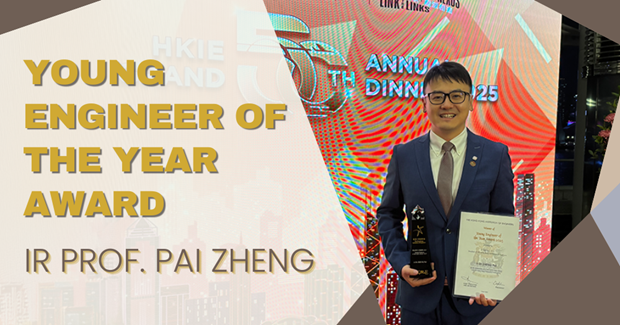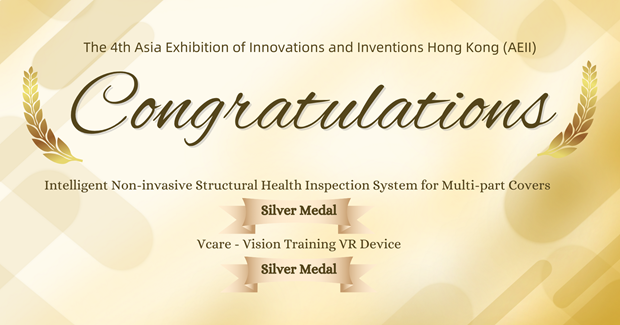Researchers at PolyU have developed and manufactured the “Surface Sampling and Packing System”, specifically designed for Chang’e 5, the Nation’s first lunar sample return mission. Following the successful launch of Chang’e 5 by the Long March 5 rocket today (24 November), the Surface Sampling and Packing System is scheduled to commence lunar sampling in early December.
Joining this historic mission is the team led by Professor YUNG Kai-leung, Sir Sze-yuen Chung Professor in Precision Engineering, Chair Professor of Precision Engineering and Associate Head of Department of Industrial and Systems Engineering, PolyU. Dr Robert W.M. TAM, Interim Director of PolyU’s Industrial Centre, is one of the team’s key members.
Chang'e 5, the third phase of the Nation’s lunar exploration project, is China’s first space mission to collect and return two kilogram samples of lunar regolith. The Chang'e 5 spacecraft comprises four modules: an orbiter, an ascender, a lander and a return vehicle. Transported on the Chang’e 5 lander, the PolyU-developed Surface Sampling and Packing System includes two samplers that can withstand 200 °C for collecting samples of lunar regolith in loose and sticky form, two heat-resistant nearfield cameras for vision guidance during sample acquisition, and a packaging and sealing system for sealing the samples in a container. Upon completion of sample acquisition on the lunar surface by the PolyU samplers, the robot arm will, through vision guidance, lift the PolyU designed and made container and place it into the ascender. The ascender will then lift off into lunar orbit, dock with the orbiter and transfer the sample container to the return vehicle for the journey back to Earth.
“Over the years, PolyU has been honoured to participate in the national space exploration programmes and to contribute to the development of highly sophisticated space instruments for the Nation,” said PolyU President Professor Jin-Guang TENG. “In the Chang'e 5 lunar exploration project, PolyU's research team has developed one of the key sets of sampling instruments and made a breakthrough in lunar surface sampling by leveraging its valuable experience in international space projects, its innovative thinking and its cutting-edge technology. In achieving its motto - ‘to learn and to apply, for the benefit of mankind’, through rigorous scientific study and research excellence, PolyU will continue to make important contributions to Chang'e 6 and other national space missions.”
Building on their previous study of the lunar environment and a wealth of experience from several lunar missions, Professor YUNG Kai-leung and his team started researching and developing the Surface Sampling and Packing System in 2011 and completed the project in 2017. Professor YUNG Kai-leung said, “The return of samples from the moon is technically complex. It takes more than six prototype productions through various stages of space qualification procedures in order to complete the project, not to mention the pre-production research, system design, discussions and meetings in collaboration with the China Academy of Space Technology.”
“The Surface Sampling and Packing System is one of the most critical components of the Chang’e 5 mission. We are truly thankful for being entrusted with such an important and challenging task for this historic space project.” Professor YUNG said.
In addition to the System itself, the innovative techniques for high-precision high-resolution 3D mapping and geomorphologic analysis of the landing region developed by Professor Bo WU from PolyU’s Department of Land Surveying and Geo-Informatics are important for characterisation of the landing region, in order to support decision-making for selecting the final landing site for Chang’e 5.
Being the only tertiary institution in Hong Kong that possesses international space qualification experience, PolyU has been contributing to the Nation’s space projects since 2010. As part of the Nation’s lunar exploration programme, Professor YUNG collaborated with the China Academy of Space Technology to develop a “Camera Pointing System” for Chang’e 3 in 2013 and for Chang’e 4’s historic landing on lunar far side in 2019, and a Mars Camera for Tianwen 1 in 2020. The “Surface Sampling and Packing System” will be used for the Chang’e 6 mission as well.
PolyU has actively participated in other space exploration projects, designing and manufacturing a number of sophisticated space tools in the past decade. These include the “Mars Rock Corer” for the European Space Agency’s 2003 Mars Express Mission and the “Soil Preparation System” for the Sino-Russian Space Mission in 2011.
由香港理工大學(理大)科研人員專為嫦娥五號研製的「表取採樣執行裝置」,將參與國家首個月球採樣返回任務。今天搭載於長征五號運載火箭的嫦娥五號已成功發射,理大的「表取採樣執行裝置」預計於12月初於月球表面展開採樣工作。
這項歷史性的研發工作由理大工業及系統工程學系鍾士元爵士精密工程教授、精密工程講座教授及副系主任容啓亮教授率領團隊共同研發,團隊主要成員包括理大工業中心暫任總監譚惠民博士。
嫦娥五號是中國探月工程第三階段的月球探測器,是中國首個月球採樣計劃,這次任務是要採集約兩公斤的月球表面樣本返回地球。嫦娥五號由軌道器、上升器、着陸器和返回器四個部分組成。至於理大研發及製造的「表取採樣執行裝置」,則載於嫦娥五號的着陸器上,執行裝置包含兩個可抵受攝氏200度的採樣器,用於收集鬆散和黏性兩類月球樣本;兩台高溫的近攝相機,可在樣本採集過程中發揮監察和指導功能;以及初級封裝系統,用以將樣本密封並保存於樣本容器中。在月球表面的採樣工作完成後,機械臂會透過視像引導將理大研製的樣本容器提起,並放入上升器內。隨後,上升器會離開月球表面進入月球軌道,與軌道器交合對接,並將樣本容器轉移至返回器,以便將樣本運返地球。
理大校長滕錦光教授表示:「理大有機會長期參與國家太空探索項目,為國家研製高度精密的太空儀器作出貢獻,我們感到非常榮幸。在這次嫦娥五號探月工程中,理大的科研團隊憑借多年來在國內外航天項目中所累積的寶貴經驗,透過創新思維及採用高端技術,研製了其中一個關鍵的採樣系統,為在月球表面的採樣工作取得了突破。理大將秉持其『開物成務,勵學利民』的校訓,希望通過嚴謹、卓越的科研工作,繼續為嫦娥六號及國家其他航天任務作出重要貢獻。」
容啓亮教授及其團隊憑藉他們對月球環境的研究基礎及多次探月任務的豐富經驗,於2011年開始着手研究和開發「表取採樣執行裝置」,並於2017年完成此項目。容啓亮教授表示:「這次的月球採樣返回任務在技術上非常複雜。團隊進行了最少六次裝置製造及交付,以通過太空儀器的驗證過程。此外,我們也與中國空間技術研究院專家保持密切溝通,在產品前期研究及系統設計上力求盡善盡美。 」
「表取採樣執行裝置是嫦娥五號採樣返回任務的一個關鍵部分。我們很榮幸能擔此重任,在這次歷史性的航太項目中獲委以這項意義重大而極具挑戰的工作。」容教授續說。
此外,理大土地測量及地理資訊學系吳波教授亦研發創新技術,以進行高精確度和高解像度的三維地形測繪及地貌分析,研究嫦娥五號着陸區的地形地貌特徵,協助選取嫦娥五號的着陸點。
理大是香港唯一擁有國際太空任務實戰經驗的高等院校,自2010年起在國家的太空探究項目方面一直不遺餘力。為支持國家的探月工程,容教授多年來與中國空間技術研究院的專家攜手研製出多項太空儀器,包括應用於2013年嫦娥三號及2019年嫦娥四號的月背探測任務的「相機指向機構系統」,以及2020年應用於天問一號的「落火狀態監視相機」。理大團隊的「表取採樣執行裝置」亦將應用於嫦娥六號探月任務。
理大多年來積極參與不同的太空探索項目,研製各項先進的太空儀器,包括為歐洲太空總署2003年火星快車任務研發「岩芯取樣器」,以及為2011年的中俄聯合探索火星任務研發「行星表土準備系統」。
[From PolyU Media Release]
Media Coverage
- SCMP - https://bit.ly/33iakuV
- Mirage News - https://bit.ly/3kWaduU
- Metro Broadcast - https://bit.ly/374br2m
- Oriental Daily News - https://bit.ly/35YnHSC
- Ming Pao Daily News - https://bit.ly/39aXlP9
- Sing Tao Daily - https://bit.ly/3m4Zm2W
- Sky Post - https://bit.ly/2J9pcVb
- Wen Wei Po - https://bit.ly/2V4TNFP; https://bit.ly/3m424pE
- Ta Kung Pao - https://bit.ly/2Jbuhfn; https://bit.ly/3pZXrzi
- Hong Kong Commercial Daily - https://bit.ly/2KxOoVP
- U Lifestyle - https://bit.ly/2UUTZYq
- Yahoo - https://bit.ly/2KzyMBf
- HK01 - https://bit.ly/3fC2v8k
| Topics | Research | Staff Achievement |
|---|---|
| Department of Industrial and Systems Engineering |
You may also like

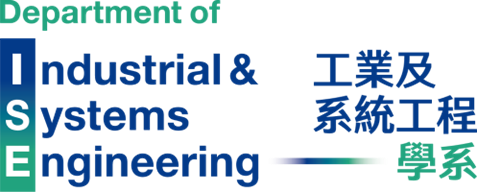
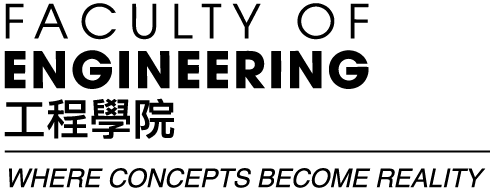




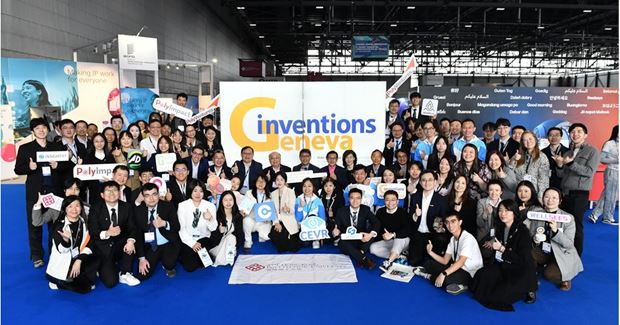

.png?bc=f1f1f1&h=325&w=620&rev=cb613a8233c945f9bcf46a3a30ea3027&hash=8C94A27234497978A2C2B7EC7C326748)
